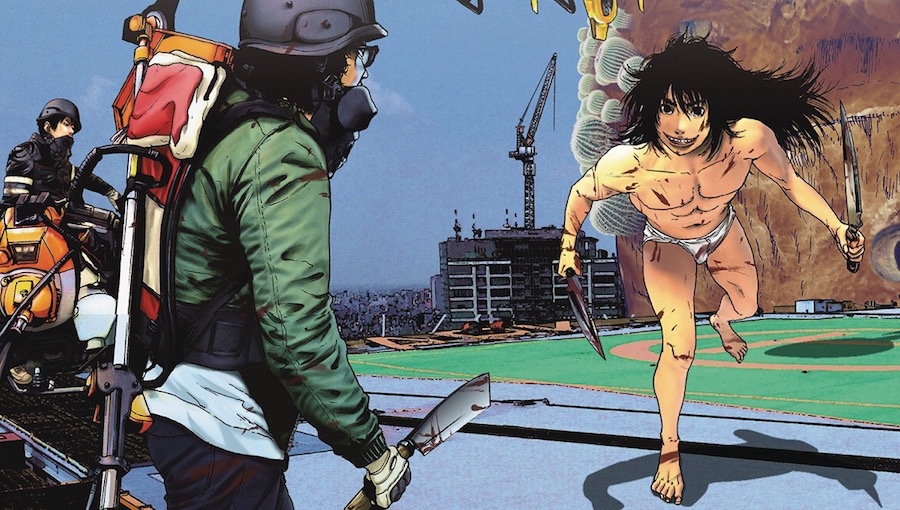Kengo Hanazawa’s brilliant I Am a Hero began as a simple, yet cleverly designed, zombie story. Here, zombies are called ZQNs, and that strong point of view coupled with incredibly beautiful artwork could have been enough, but he has turned this epic tale of survival into a sprawling parable of individuality versus singularity.
Part of my review will be processing everything that came to light in the tenth omnibus. Many hard truths and personal revelations came to light while, at the same time, all of the threads that have been strung out over previous volumes are starting to weave together – and it’s not always very pleasant. This is ultimately a horror story, after all.
What you expect doesn’t matter; it doesn’t come into play. Hanazawa isn’t interested in giving us what we expect in a zombie story (though those elements appear). He wants to challenge our perceptions. This volume begins with one of the strangest things I’ve ever seen: body horror with meaning. It’s what might happen if Salvador Dali and David Cronenberg decided to collaborate on a zombie story. You can’t take your eyes off the page.
In a paper called Aristotle’s Function Argument on the Oxford Scholarship website written by Christine M. Korsgaard, Korsgaard abbreviates Aristotle’s claim that “the function of human life is rational activity performed well, which Aristotle takes to mean in accordance with virtue.” This comic is called I Am a Hero. A hero is someone whom we perceive to be virtuous. Humanity, by and large, is something that often lacks virtue. It’s selfish and dirty. It takes natural things like sex, love, and nature, and it distorts them to match selfish desires and wants. That doesn’t necessarily make a person evil, but the individual mind can be one of the most dangerous things and one of the most beautiful things. It can create so much, it can save those less fortunate, but it can do the opposite.
What’s the opposite of the individual mind? Singular thought. We see this in religions, in cults, in fascist governments. Individual thought is quashed. With a cult or religion, what might at first seem freeing, becomes dangerous. Ultimately, what will happen in I Am a Hero has been yet to be revealed, but there’s more going on in this volume than any of the other volumes, or I should say, it adds another layer to everything that’s come before.
From the beginning, the characters in I Am a Hero, as the world around them has fallen apart, have tried to cling to rational activity, all the while the world around them has begun to reshape according to, what at first appeared as chaos. What science has discovered about chaos in recent years is that, if you look closely enough, there is a structure even to that chaos. We fear what we don’t understand. Theoretically then, when we begin to understand what we fear, and we should no longer be afraid. As this chaos becomes more understood, I have my doubts here.
There have been a lot of questions lingering as the series of events in I Am a Hero have become more and more absurd. Some of those things have been incredible – some hilarious, some heartbreaking, some tender and human, and some terrible and inhuman. Through the eyes of humanity on the page, I have seen things I’ve never seen before; the wide girth of human experience on display here has been breathtaking.
There are a lot of ideas in this review and no bowtie to go with it. Well, have one omnibus left. So, with all that in mind, what are we left with as we head into the final act of the story? We are left with a main character in Hideo who may finally understand what it means to be a hero, and what it means to be a human. That may be enough. If not, what an amazing ride this has been.
Creative Team: Kengo Hanazawa (story, art), Kumar Sivasubramanian (Translation), Philip R. Simon (English adaptation), Steve Dutro (letters)
Publisher: Dark Horse
Click here to purchase.

